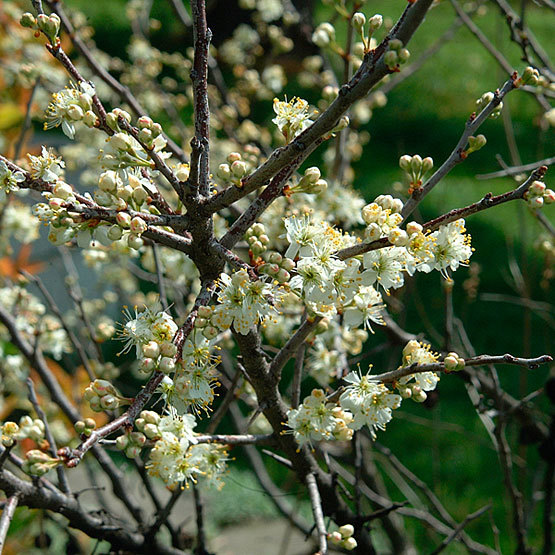
Prunus is a genus of more than 200 species of trees and shrubs from many areas of the globe, occuring in woodlands, thickets, and on coasts and cliffs. Leaves are usually toothed, and the 5-petaled flowers are white, pink, or red. Round fruits follow and are deliciously edible in some species. Some species also have attractive, shiny bark and good autumn color. The fruit and foliage of some species are toxic. Grow as specimens, in a shrub border, as screening, or groundcover. There is a species for most garden uses.
Noteworthy CharacteristicsShowy flowers, fruit, and sometimes foliage. Often short-lived.
CareNeeds moist but well-drained soil of moderate fertility. Plant deciduous species in full sun and evergreens in full sun or part shade.
PropagationSow seed in containers outdoors in the fall. Using bottom heat, root greenwood cuttings of deciduous species in early summer and semi-ripe cuttings of evergreens in midsummer.
ProblemsPrunus are susceptible to a wide variety of pests and diseases, including caterpillars, borers, scale insects, aphids, leaf hoppers, nematode, eriophyid mites, crown gall, mushroom root rot, dieback, lesions, fireblight, leaf curl, powdery mildew, and mosaic and ringspot viruses.






















